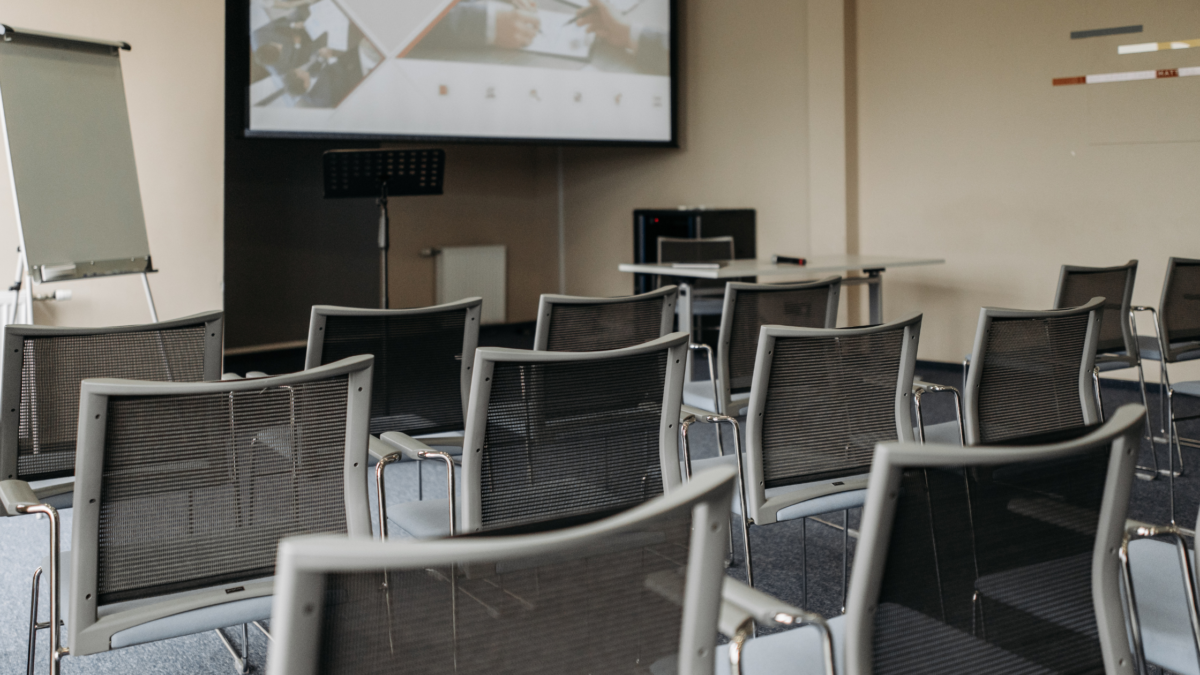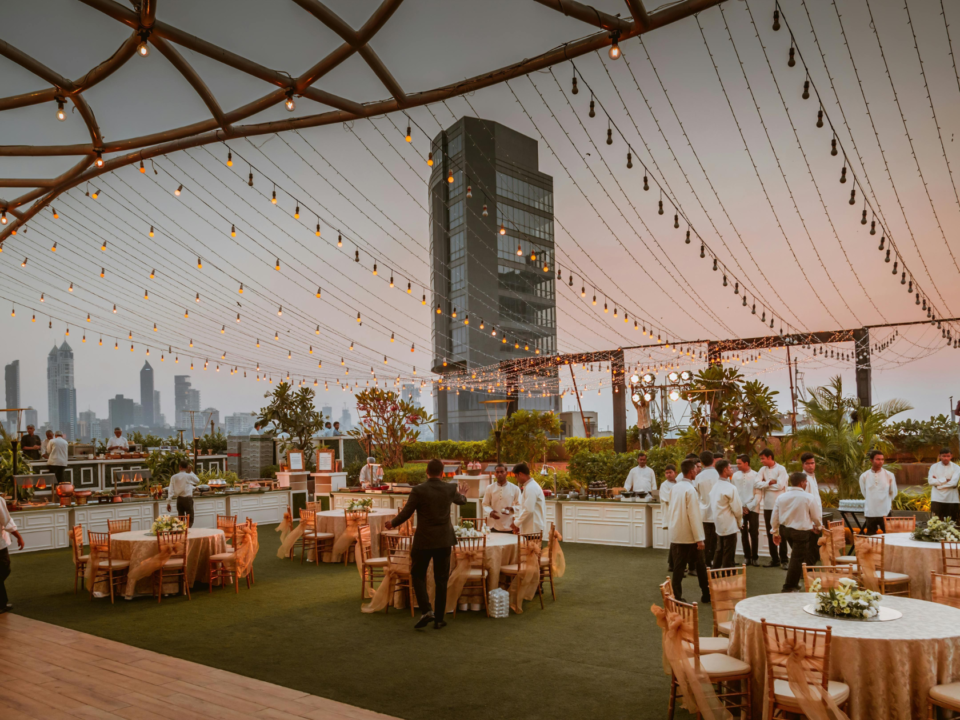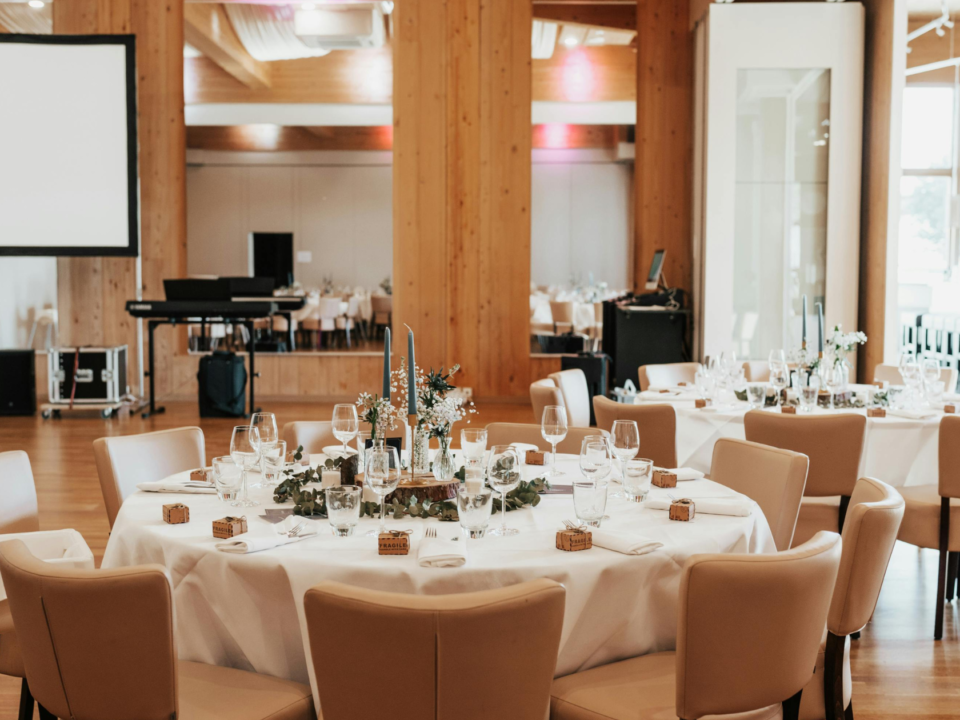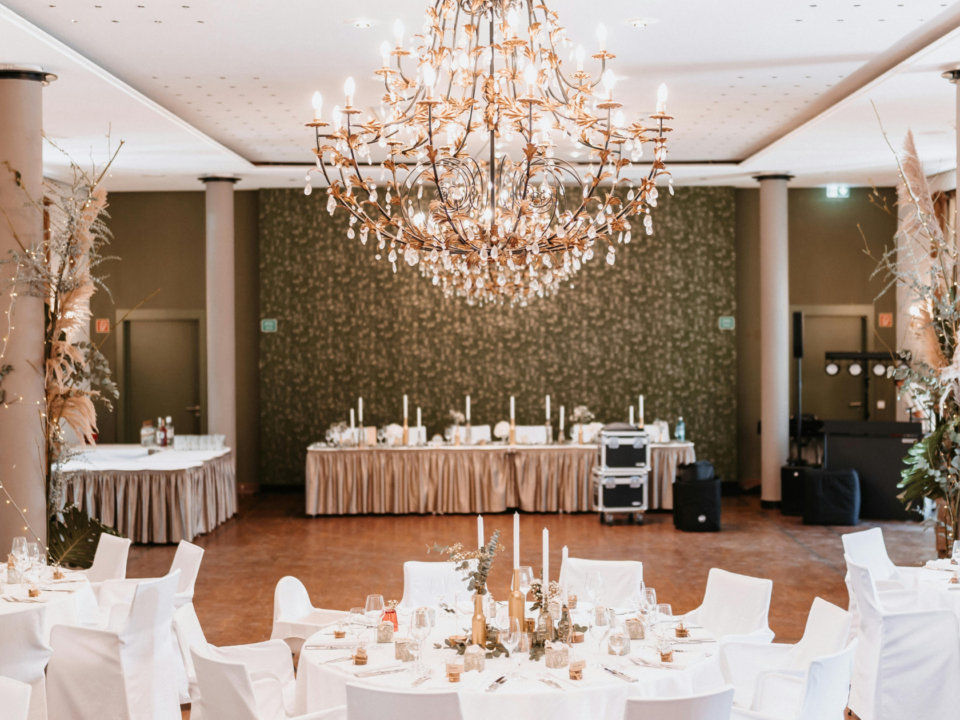How to Find Ideal NYC Small Conference Venues for Intimate Meetings?

Top NYC Corporate Conference Venues for Your Next Business Event
August 22, 2025When people picture corporate events in New York City, they often imagine massive conventions with thousands of attendees, large stages, and bustling expo halls. Yet some of the most powerful and effective gatherings in NYC happen on a much smaller scale. A “small conference” or “intimate meeting” is typically designed for groups ranging from 8 to 75 participants. These meetings are high-value and often involve senior executives, board members, key clients, or select teams working on strategic initiatives, making NYC small conference venues the perfect choice for focused, impactful events.
Smaller venues win big because they create a setting that encourages focus and genuine engagement. In large conferences, it’s easy for people to blend into the background or for conversations to feel rushed. In contrast, intimate meetings allow space for true dialogue, deeper connections, and sharper decision-making. The value per attendee is often higher because participants walk away with real outcomes, agreements made, strategies aligned, or partnerships strengthened.
Logistics also work in favor of smaller events. With fewer moving parts, planners can invest more in the details that matter most, from top-tier catering to advanced A/V setups. This translates into a higher production value per person, which attendees immediately notice. In a city as competitive as New York, delivering that level of quality signals respect for participants’ time and elevates the overall perception of your organization.
Laying the Blueprint: Defining Goals, Attendees, and Headcount
Every successful small conference or intimate meeting begins with a clear blueprint. Without one, even the most elegant space in New York City can fall short of expectations. The blueprint isn’t just a checklist; it’s the foundation of the entire planning process. You need to ask yourself: What is the core reason we’re bringing people together? Maybe it’s a leadership retreat where big-picture strategies are finalized, a board meeting where sensitive decisions are made, or an exclusive client workshop designed to showcase thought leadership. Defining this purpose upfront ensures that the NYC small conference venues you choose naturally support the energy and outcomes you’re aiming to create.
Attendee profiles should always be the next layer in the blueprint. Senior executives, for example, will expect polished service, private breakout areas, and secure A/V systems that allow them to present without distraction. Clients may prefer a professional yet approachable setting that makes them feel valued and comfortable. Board members, on the other hand, often prioritize confidentiality above all else, which means the venue should provide discreet entryways, controlled access, and secure storage. The more you understand your audience, the easier it becomes to identify non-negotiables and separate must-have features from nice-to-haves.
Headcount rounds out the blueprint. Small meetings can look very different depending on size. A boardroom setting works beautifully for 12 people engaged in high-level conversation, while a U-shape format might be more effective for a 30-person strategy session. A 50-person client training or team retreat might benefit from a cabaret or classroom-style setup to encourage both learning and dialogue. By narrowing down your ideal headcount band, whether that’s 8–20, 20–40, or up to 75, you set realistic expectations for space, layout, and flow. The best venues offer flexibility so you can fine-tune the configuration without sacrificing comfort or focus.
Technology and Connectivity Essentials
Technology is no longer a bonus in corporate meetings; it’s the backbone of how content is delivered and how participants experience it. In small conferences, especially, A/V details feel magnified. A built-in display or high-quality projection system keeps presentations sharp and professional. Confidence monitors allow speakers to keep their flow while maintaining eye contact with attendees. Smooth switching between slides or presenters eliminates the awkward downtime that can chip away at focus. These aren’t just “extras”; they are elements that determine whether the NYC small conference venues you choose feel modern and seamless or clunky and outdated.
Audio clarity is particularly important in intimate spaces. In a large ballroom, a muffled microphone might be ignored, but in a room of 20 people, it becomes a glaring distraction. That’s why tabletop microphones, lavaliers, or compact systems with echo control are essential. Background noise must also be managed, whether it’s from the street outside or another event happening next door. Good acoustics protect concentration, making it easier for participants to fully engage.
Connectivity is another pillar of small meeting success. Attendees expect enterprise-grade Wi-Fi that can handle multiple devices without dropping speed. For presenters, a hardwired internet connection ensures stability, especially if live streaming is involved. Outlets should be plentiful and easy to access so laptops and devices stay powered without interrupting the flow. And in today’s environment, hybridization is no longer a trend but a standard. Even if your group is small, chances are one or more participants will need to join remotely. A two-camera setup, one wide and one close-up, often does the job well, giving remote attendees a professional, inclusive experience. Secure streaming platforms, clear recording policies, and reliable file delivery reinforce professionalism while protecting sensitive content.
Choosing the Right Location and Ensuring Privacy
Location in New York City can make or break an intimate meeting. The right neighborhood not only sets the tone but also dictates convenience for attendees who are often pressed for time. Midtown remains the top choice for many planners because of its unparalleled access to transit hubs like Penn Station and Grand Central, as well as its abundance of nearby hotels. For executives flying in for the day, Midtown provides fast, reliable in-and-out access, which keeps agendas on track and reduces stress.
That said, different areas of the city carry their own advantages. Downtown and the Financial District work particularly well for finance or government-related meetings. Holding your gathering close to Wall Street or City Hall reinforces the context of the conversations happening inside. Uptown and the West Side, on the other hand, provide quieter settings and cultural amenities, appealing to organizations that want to blend business with an elevated, relaxed atmosphere. Choosing a neighborhood is about more than geography; it’s about matching the spirit of the event to its surroundings.
Privacy is another critical element when selecting a venue for small conferences. Many of these gatherings involve confidential information or sensitive decision-making, so discretion must be built into the environment. Venues with private entrances, secure hallways, and separate green rooms help maintain that confidentiality. Noise isolation is equally vital. A room that blocks out street traffic, construction sounds, or neighboring events allows participants to focus fully on the task at hand. In high-stakes meetings, even a minor distraction can derail momentum. When a venue delivers both accessibility and discretion, attendees walk away with a sense of professionalism and trust that reflects well on your organization.
Hospitality and Guest Experience
In smaller conferences, every detail matters. Unlike larger events where imperfections can fade into the background, intimate gatherings magnify the quality of the guest experience. This is why hospitality becomes the central driver of success. Attendees should feel cared for from the moment they arrive until the very last handshake. Seamless check-in, an attentive on-site coordinator, and quick, quiet room resets between sessions make a powerful impression. White-glove service, where staff anticipate needs before they’re voiced, elevates the experience at NYC small conference venues from simply functional to polished and memorable.
Amenities are another vital aspect of guest experience. Comfort and inclusivity must always come first. Something as straightforward as a well-organized coat check or discreet bag storage can ease stress for attendees. Quiet spaces or wellness rooms provide relief for guests who may need to recharge during a full-day agenda. Nursing rooms and prayer spaces demonstrate that the event has been designed thoughtfully with diverse needs in mind. For networking, strategically placed lounge nooks encourage natural conversation during breaks without requiring structured programming.
Food and beverages also shape how guests perceive the day. In smaller meetings, catering feels more personal, and so it should be chosen with care. Light, energizing menus that support focus are far better than heavy meals that lead to sluggishness. Coffee should be available in ways that align with the rhythm of the event, whether through ongoing service, barista stations, or timed breaks. Hydration stations are a subtle but important detail; when they’re placed conveniently, they help maintain energy without interruptions. In compact spaces, large buffets may feel disruptive, so passed hors d’oeuvres or curated action stations often work better. When food, service, and amenities are aligned, participants leave feeling both respected and refreshed.
Accessibility, Safety, and Budget Planning
Accessibility should never be a secondary consideration; it must be at the forefront of every venue decision. In New York, where older buildings may present challenges, it’s critical to confirm ADA-compliant entrances, stages, and restrooms. Beyond physical access, flexibility in seating arrangements ensures that mobility devices can be accommodated naturally within the room without drawing unwanted attention. Climate control also plays a significant role; nothing derails concentration faster than a room that is too hot or too cold. Even fragrance-free policies should be considered, as they demonstrate sensitivity to attendees with allergies or scent sensitivities.
Safety and compliance go hand-in-hand with accessibility. Even small gatherings must have clear emergency protocols, access to medical support, and staff trained to handle urgent situations. Venues should also be transparent about their adherence to city permits, insurance requirements, and union regulations that may affect setup or staffing. These details, though often overlooked, can quickly disrupt planning if not addressed early. By confirming them ahead of time, planners reduce the risk of last-minute surprises.
Budgeting for small venues can appear deceptively simple, but hidden fees have a way of creeping in. Core costs typically include room rental, food and beverage minimums, A/V packages, and staffing. However, secondary charges, like rigging, power drops, freight handling, waste removal, or overtime labor, can add thousands to a bill. The best strategy is transparency: negotiate upfront for all potential charges and look for opportunities to bundle services. Flexible dates or off-peak scheduling can provide significant savings, and partial buyouts often strike a balance between privacy and cost. With a clear budget plan, organizations can invest in creating a high-quality experience without fear of unexpected costs undermining the return on investment.
Planning Framework: Shortlists, Site Visits, and Run-of-Show
Selecting the right venue for an intimate meeting requires structure, not guesswork. Building a shortlist is the first step, and it works best when guided by a scorecard. Planners should evaluate options against specific criteria: capacity, A/V infrastructure, privacy features, accessibility, catering options, and overall cost. By scoring each venue objectively, decision-making becomes less about impressions and more about measurable fit. Creating a list of deal-breakers, such as a lack of ADA access or insufficient privacy, quickly eliminates unworkable spaces. From there, a tie-breaker matrix helps compare finalists on softer elements like ambiance, style, or reputation.
Site visits are where shortlists are tested against reality. Walking through the venue allows you to assess details that proposals rarely reveal. Test the acoustics while HVAC systems are running, not when they’re silent. Check Wi-Fi speeds at multiple spots within the room to ensure reliable connectivity. Stand at various seating positions to confirm sightlines to the stage or display. Walk the load-in path to see how vendors and catering will operate without disrupting attendees. Examine green rooms, storage areas, and restroom access. Finally, pay attention to external noise; even the most elegant venue can fail if street traffic or neighboring events bleed into your session.
Once the venue is selected, attention turns to the run-of-show, the agenda framework that shapes the attendee journey. For half-day meetings, a simple flow of registration, plenary, a networking break, and closing remarks may suffice. Full-day events require more balance, mixing plenary sessions with breakouts, networking meals, and wellness pauses to sustain energy. Room resets must be planned in advance, especially if the same space will host multiple formats. Buffer times are critical for executive-level meetings, where schedules can shift unexpectedly. Adding thoughtful touches like personalized name badges, branded signage, and digital agendas elevates the event, reinforcing professionalism while making the gathering feel curated and intentional.
Contracts, RFPs, and Timelines
Strong contracts and RFPs prevent misunderstandings and protect both planners and venues. An RFP should include headcount ranges, preferred layouts, A/V assumptions, catering needs, and accessibility requirements. Adding details such as privacy expectations, recording rules, and insurance certificates ensures venues can respond accurately. Standardizing the format makes comparison easier and speeds up decision-making.
Timelines for small meetings are shorter than for large-scale conferences, but structure is still essential. Ideally, venues should be booked 8–12 weeks in advance. Menus and agendas can be finalized 6–8 weeks out, with room diagrams, attendee lists, and staffing completed 2–4 weeks before. The week of the meeting should focus on rehearsals, show calls, and final checks. This disciplined approach minimizes stress and ensures everything is ready for a seamless event.
Conclusion: Choosing Small Venues with Confidence
Finding the right small conference venue in NYC may feel overwhelming at first, given the sheer number of options. But by clarifying your objectives, defining attendee needs, prioritizing A/V and privacy, and following a structured framework for evaluation, you can quickly identify spaces that fit both your goals and your brand. Small conferences at NYC small conference venues offer outsized impact, stronger engagement, higher production value per attendee, and the kind of personal experience that large events can’t replicate.
By treating intimate meetings with the same seriousness as large conferences, you elevate the experience for every participant. Attendees leave feeling valued, connected, and aligned, which is ultimately the goal of any successful meeting.
At 3 West Club, we know what it takes to host small conferences and intimate meetings that deliver results. Located in Midtown Manhattan, our venue offers elegant, flexible rooms that adapt seamlessly to executive board meetings, client sessions, or leadership retreats. We combine historic charm with modern functionality, giving your event both sophistication and practicality.
Our team provides attentive on-site coordination, ensuring every detail, from A/V to catering, runs smoothly. We offer production-friendly layouts, refined in-house menus, and hospitality touches that reflect the professionalism of your organization. With our central location near transit hubs and hotels, your attendees can arrive easily and focus entirely on the meeting at hand. Beyond corporate events, 3 West Club also offers elegant meeting space, versatile holiday party venues, a beautiful rooftop space, refined intimate wedding venues, comfortable guest rooms, and a historic wedding venue that combines timeless charm with modern convenience.
If you’re planning a small conference in NYC, we invite you to visit us. Schedule a site tour, review available layouts, and discover how 3 West Club can create the perfect setting for your next intimate gathering.






